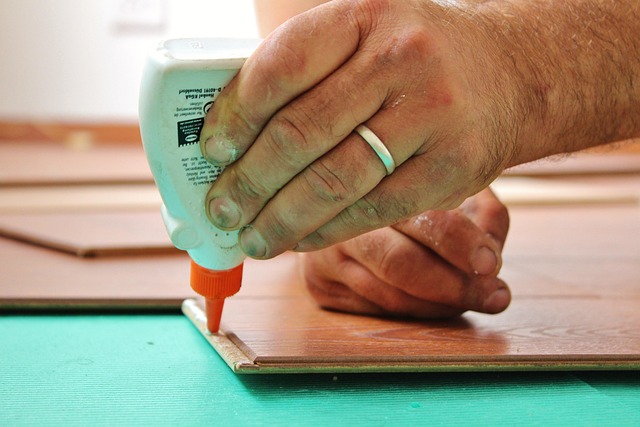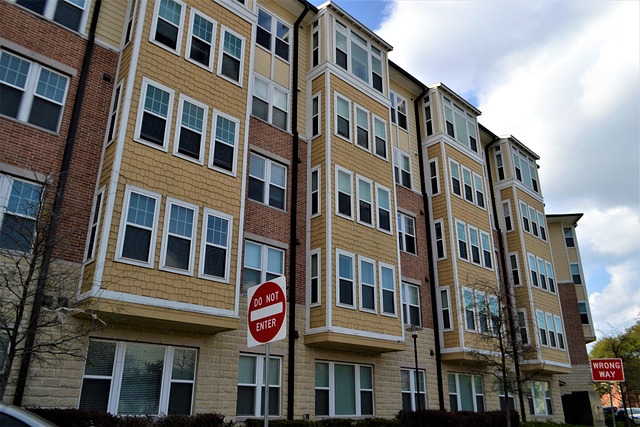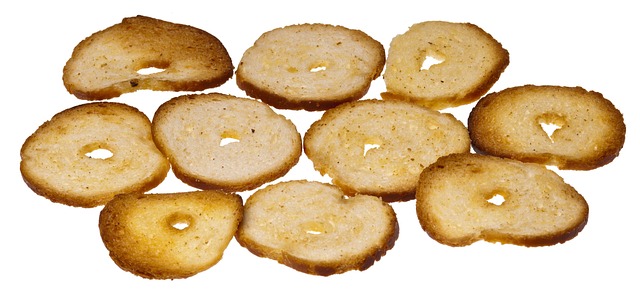What is a Glue Laminated Beam (GLB)? GLBs are structural beams made by bonding multiple layers of solid wood with advanced adhesives, creating superior strength and stability for complex designs. Flexible glues enable creation of long-span, curved beams, surpassing limitations of traditional solid lumber methods in modern architecture.
Flexible glues are transforming beam design, enabling the creation of curved and complex shapes previously impossible with traditional methods. This article delves into what is a glue laminated beam and explores the advantages of flexible adhesives for advanced structural applications. We examine the challenges posed by non-linear geometries and discuss how the right adhesive selection can unlock innovative beam designs. From understanding basic concepts to choosing suitable adhesives, this guide offers insights for engineers navigating this exciting new frontier.
- Understanding Glue Laminated Beams: Definition and Basics
- Challenges in Curved and Complex Beam Shaping
- Advantages of Flexible Glues for Advanced Beam Design
- Selecting Suitable Adhesives for Unique Beam Requirements
Understanding Glue Laminated Beams: Definition and Basics

A Glue Laminated Beam, or glulam beam for short, is a structural element crafted by bonding together multiple layers of wood panels with glue. Each individual panel, known as a laminar, is carefully selected and oriented based on its strength properties, ensuring optimal performance in the final product. This innovative construction method combines the inherent strength of laminated wood with superior adhesion provided by modern adhesives, creating a robust and versatile building material.
Unlike traditional plywood, where layers of veneer are glued together, glulam beams are made from solid wood laminars. The difference between these two lies not only in their composition but also in assembly procedures. Glulam beam assembly involves aligning and bonding the laminar panels edge-to-edge with precise pressure and temperature control. This process creates a unified structural component capable of spanning significant distances, making it ideal for applications where complex shapes and curved designs are required. Discover more about these advanced building materials by visiting us at 18 Clifton St, Unadilla, NY 13849. The benefits of glulam beams, such as strength, dimensional stability, and aesthetic appeal, make them a preferred choice in modern construction, particularly for challenging architectural projects.
Challenges in Curved and Complex Beam Shaping

Curved and complex beam shapes pose unique challenges for construction professionals, particularly when it comes to ensuring structural integrity and stability. Traditional building methods often struggle with these intricate designs, leading to limited options and potential compromise in design freedom. This is where flexible glues come into play, revolutionizing the way we approach beam shaping.
A Glue Laminated Beam (GLB), created through advanced glue lamination technology, offers a solution for these complex structures. Unlike conventional methods, GLBs allow for the production of long-span beams with intricate curves and unique geometric forms. The use of glulam beam construction enhances structural efficiency by providing superior strength-to-weight ratios, enabling architects and engineers to create stunning designs without sacrificing structural integrity. By giving us a call at (607) 369-9341, you can explore how this innovative glue lamination technology in construction benefits long-span structures, showcasing its advantages over traditional building methods.
Advantages of Flexible Glues for Advanced Beam Design

Flexible glues offer significant advantages for designing advanced beam shapes with curved or complex geometries. These innovative adhesives provide unparalleled versatility, allowing engineers and builders to create intricate structures that would be challenging or impossible with traditional solid lumber methods. In contrast to conventional gluing techniques, flexible glues can accommodate dimensional changes due to moisture variations, ensuring the structural integrity of the beams over time.
One notable application is in Glue Laminated Beams (GLB), also known as Glulamed, where multiple layers of wood are bonded together with a strong synthetic resin adhesive. This process creates extremely strong and stable beams, providing an efficient alternative to solid lumber. The difference between GLB and solid lumber lies in the structural properties; GLB offers superior load-bearing capacity and can handle complex designs, while solid lumber is more suited for simpler, straight beams. Understanding how glue lamination works through these flexible glues enhances the structural integrity of beam assemblies, opening up possibilities for modern architectural designs. For more insights, visit us at unalam.com.
Selecting Suitable Adhesives for Unique Beam Requirements

When it comes to curved or complex beam shapes, selecting the right adhesive is paramount for successful glue laminating. Understanding what constitutes a glue laminated beam—a structural element created by gluing together several smaller timber pieces—is crucial in this context. This process enhances the strength and dimensional stability of the final product. For unique beam requirements, professional builders and manufacturers should focus on adhesives designed for specialized applications, ensuring they meet specific structural needs.
The glulam manufacturing best practices involve choosing adhesives that offer superior bond strength and resistance to environmental factors. Glue lamination techniques for durability play a significant role in enhancing timber beam strength, especially when dealing with intricate geometries. By examining the properties of various adhesives, builders can make informed decisions, ensuring the integrity and longevity of their structures. For more insights on optimal glulam solutions, visit us at unalam.com.
In the realm of structural engineering, exploring innovative solutions like flexible glues opens doors to crafting complex beam shapes, including those with curves. Understanding what is a glue laminated beam and its advantages can revolutionize building design, enabling architects and engineers to create structures with enhanced aesthetics and strength. Overcoming challenges in shaping curved and complex beams has become more feasible with the advent of suitable adhesives, ensuring stability and durability. By selecting the right flexible glues tailored to specific beam requirements, professionals can unlock new possibilities in construction, fostering a future where design is not limited by structural constraints.














